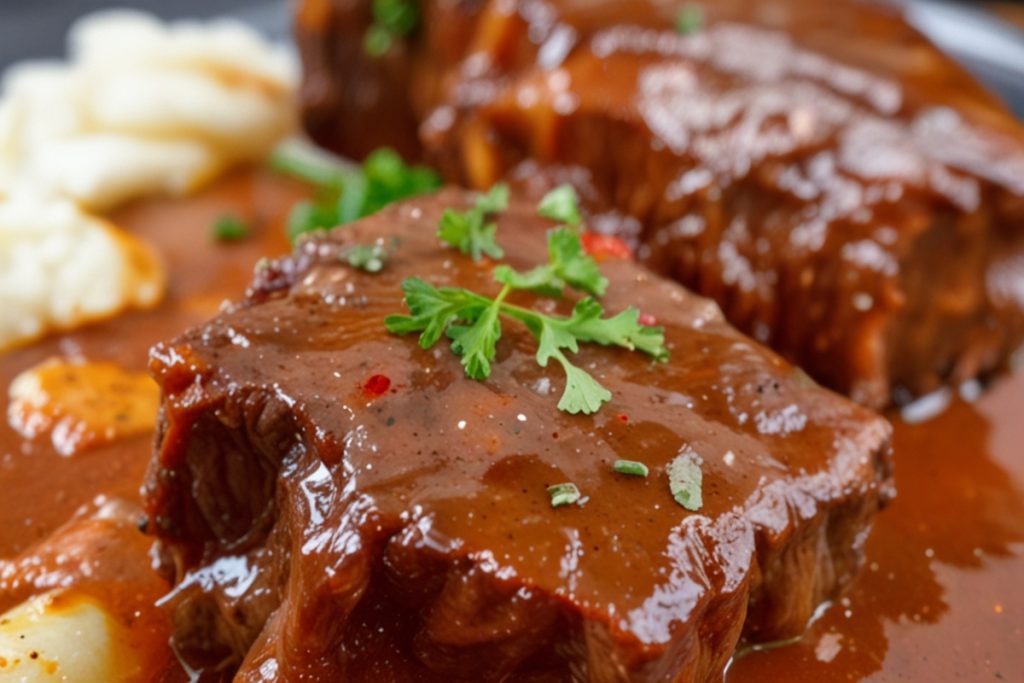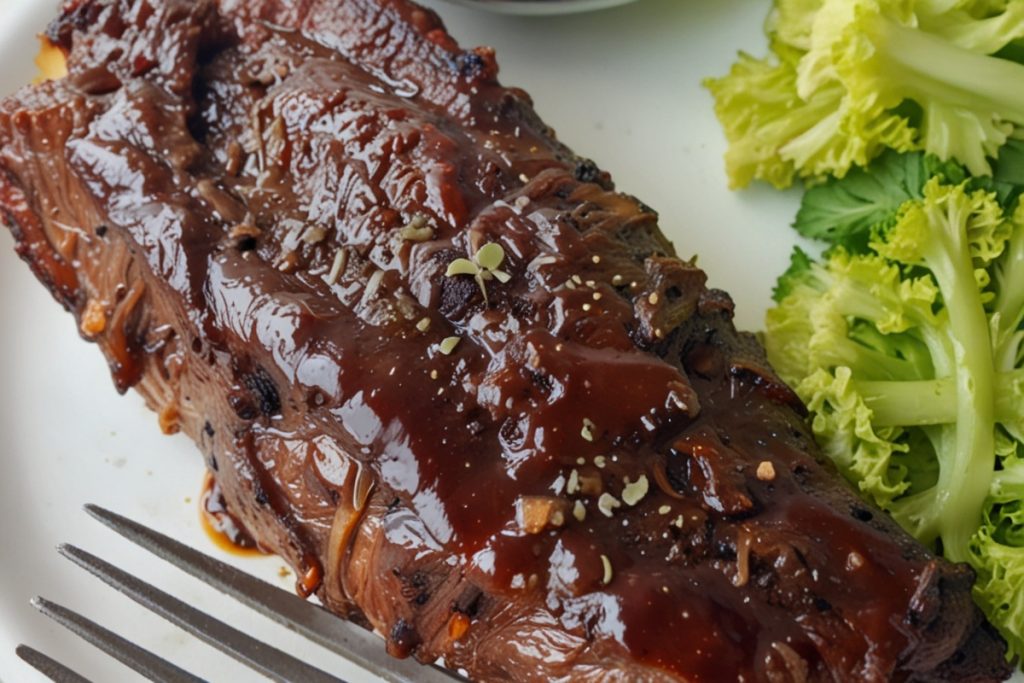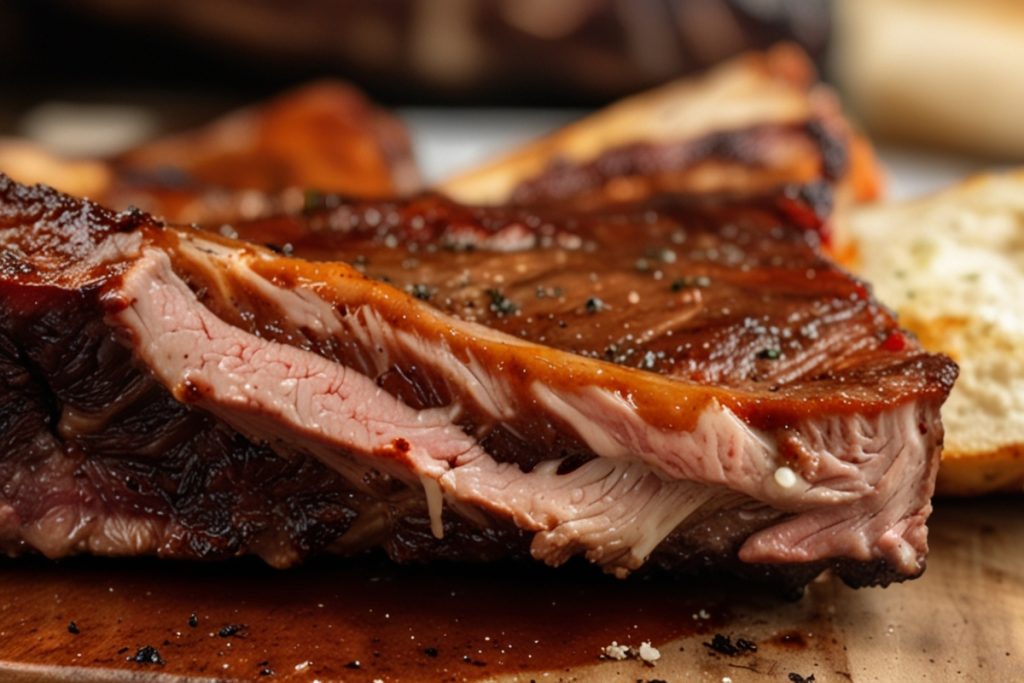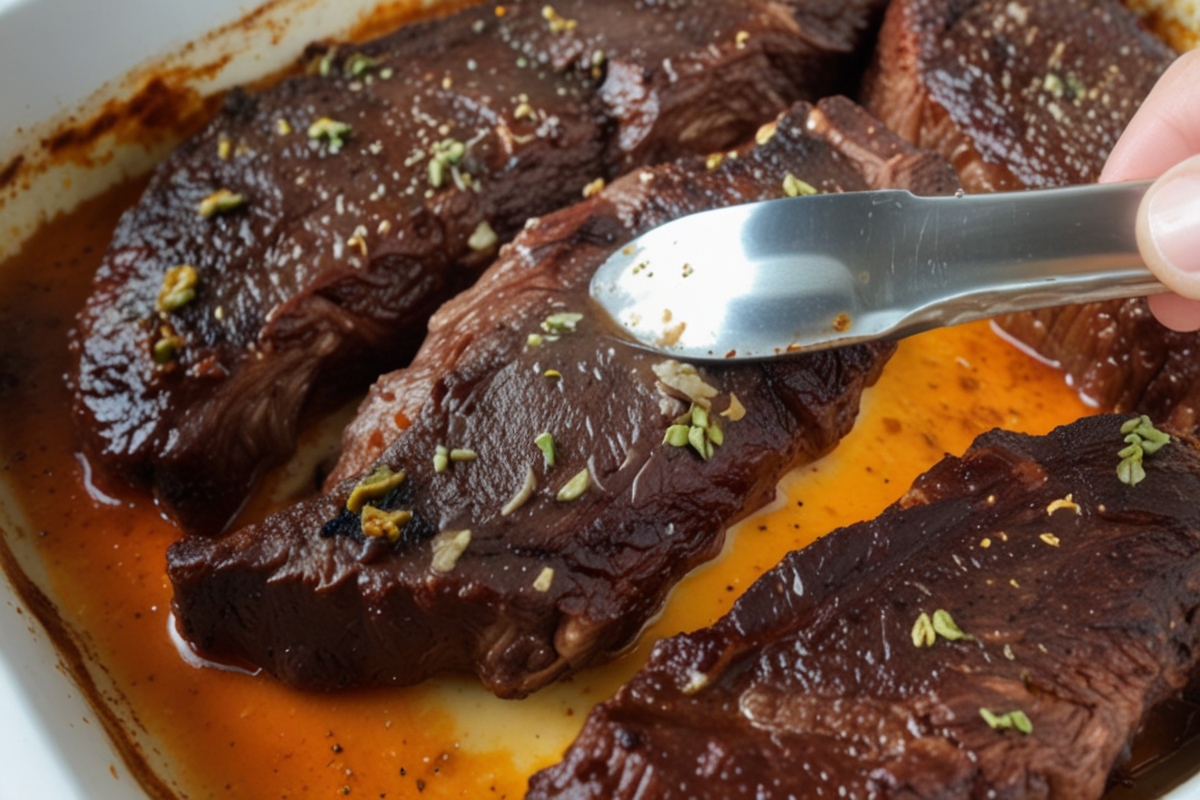Understanding Boneless Beef Ribs
When it comes to cooking delicious meals, boneless beef ribs are a fantastic option. They’re tender, flavorful, and surprisingly easy to prepare. In this article, we’ll explore everything you need to know about cooking boneless beef ribs in the oven, including what they are, their nutritional value, and tips for preparation. Whether you’re a beginner or a seasoned cook, this guide will help you master the art of making succulent beef ribs.
What Are Boneless Beef Ribs?
So, what exactly are boneless beef ribs? Essentially, they are cuts of beef that come from the rib section of the cow, specifically the lower rib area. Unlike traditional beef ribs that come with bones, boneless beef ribs have had the bones removed, which makes them easier to handle and serve.
You might wonder how they differ from bone-in ribs. Well, the main difference is the absence of bones, which means that cooking and eating them can be a lot more convenient. Without bones, you get more meat per serving and a quicker cooking time, which is perfect for those busy weeknights.
Boneless beef ribs have gained popularity in recent years, especially for grilling and oven-roasting. They’re versatile and can be used in a variety of dishes. You might see them featured in barbecue recipes, casseroles, or even served with sides like mashed potatoes or salad. Their rich flavor pairs well with many sauces and seasonings, making them a favorite for home cooks and chefs alike.
Nutritional Value of Boneless Beef Ribs
Now, let’s take a look at the nutritional value of boneless beef ribs. A standard serving size provides a hearty amount of protein, making them an excellent choice for anyone looking to increase their protein intake. For instance, a 3-ounce serving typically contains about 22 grams of protein and roughly 200 calories, depending on the cut ,to learn more about the nutritional value of beef, check out this resource: Learn more about the nutritional value of beef..
In addition to protein, boneless beef ribs also contain essential vitamins and minerals. They’re a good source of iron, which helps transport oxygen in your blood, and zinc, which is crucial for your immune system. Furthermore, beef ribs contain various B vitamins, including B12, which is important for nerve health.
However, it’s important to consider portion sizes when including boneless beef ribs in your diet. While they are nutritious, they can also be high in fat, especially saturated fat. To balance your meal, consider pairing them with healthy sides like vegetables or whole grains. For example, adding a fresh salad or roasted veggies can create a well-rounded meal that supports your health.
For more insights into healthy meal options, check out this French onion soup recipe for a delicious side dish that complements beef ribs perfectly!
Preparing Boneless Beef Ribs for the Oven
Now that you understand what boneless beef ribs are and their nutritional benefits, let’s dive into the preparation process. Selecting quality meat, having the right tools, and knowing how to season your beef ribs are essential steps for achieving mouthwatering results.
Selecting Quality Boneless Beef Ribs
When it comes to choosing the best cuts of boneless beef ribs, visiting your local butcher or grocery store is the first step. Look for cuts that have a good amount of marbling. Marbling refers to the small streaks of fat within the meat. It adds flavor and keeps the meat juicy during cooking. A well-marbled cut will typically result in a more tender and tasty rib, If you’re interested in sourcing your meat responsibly, explore sustainable beef sourcing options..
Next, pay attention to the color of the meat. Fresh beef should have a bright red hue, which indicates that it’s fresh. Darker meat can be an indication that it’s older, so it’s best to avoid it if you can. If you have the option, choose ribs that come from grass-fed cows, as they tend to have better flavor and nutritional profiles.
Another tip for sourcing quality beef is to ask your butcher about the origin of the meat. Sustainable and local sources are preferable, as they often provide better quality cuts. If you’re unsure, look for labels that say “USDA Choice” or “USDA Prime,” as these grades signify higher quality meat.
Essential Tools and Equipment
To cook boneless beef ribs in the oven, you’ll need a few essential tools and equipment. First and foremost, a sharp knife is crucial for trimming any excess fat from the ribs. You want to remove any thick pieces of fat to prevent greasiness while still leaving some for flavor.
Next, a heavy-duty roasting pan is ideal for cooking ribs in the oven. It should be sturdy enough to hold the weight of the meat without bending. Additionally, using a rack inside the pan can help elevate the ribs, allowing the heat to circulate evenly around them.
When it comes to oven settings, preheating your oven to the right temperature is vital. For most recipes, you’ll want to cook your boneless beef ribs at around 300°F to 350°F (150°C to 175°C). This low and slow method will ensure that the meat becomes tender without drying out. You might also consider using a meat thermometer to check for doneness, ensuring that your ribs reach the right internal temperature for safe eating.
Marinades and Seasoning Ideas
Now let’s talk about the fun part: marinades and seasonings! The right marinade can elevate your boneless beef ribs, infusing them with flavors that make your taste buds dance. One popular marinade includes soy sauce, garlic, brown sugar, and a splash of vinegar. Combine these ingredients and let your beef ribs soak for at least an hour, or even overnight for more intense flavor.
For those who prefer dry rubs, there are endless options. A simple mix of brown sugar, paprika, garlic powder, and black pepper can create a delightful crust on your ribs. The sweetness from the brown sugar caramelizes while cooking, giving your ribs a beautiful color and flavor.
As for marinating times, it’s generally recommended to marinate beef ribs for at least 30 minutes to allow the flavors to penetrate. However, if you have the time, letting them marinate overnight is best. Just remember to keep the ribs refrigerated while they soak to ensure safety.
For more ideas on seasoning, you might enjoy this Salisbury steak recipe that offers some tasty flavor profiles to inspire your culinary creativity!
Cooking Boneless Beef Ribs in the Oven
Now that you’ve selected your boneless beef ribs and prepared them with your favorite marinades or seasonings, it’s time to cook them to perfection! Cooking ribs in the oven can yield deliciously tender and juicy results if done correctly. Let’s walk through a step-by-step guide to ensure your beef ribs are a hit at the dinner table.

Step-by-Step Cooking Guide
Preparing the Oven
First things first: preheat your oven! Set your oven to around 300°F to 350°F (150°C to 175°C). This lower temperature is key to cooking the ribs slowly, allowing the flavors to develop while keeping the meat tender. If you have a convection oven, you can lower the temperature slightly since they cook more efficiently, For more tips on ensuring your meat stays tender, discover techniques for cooking tender beef..
Searing vs. Non-Searing: Benefits and Methods
Next, you’ll need to decide if you want to sear your ribs before baking. Searing is the process of quickly browning the meat in a hot pan before cooking it in the oven. This technique can add a lovely caramelized crust that enhances flavor.
To sear, heat a bit of oil in a heavy skillet over medium-high heat. Once hot, add your ribs and brown them on all sides for about 2-3 minutes. After searing, transfer the ribs to your roasting pan. If you prefer not to sear, you can skip this step. Your ribs will still turn out delicious; they may just have a slightly different texture.
Cooking Time and Temperature Guidelines Based on Thickness
Now, let’s talk about cooking times. The general rule of thumb is to cook boneless beef ribs for about 2.5 to 3 hours, depending on their thickness. If your ribs are around 1 inch thick, aim for the shorter end of that range. Thicker cuts will take longer. For perfectly cooked ribs, the goal is to reach an internal temperature of about 190°F (88°C). This ensures that the meat is tender and can easily pull apart.
To make things easier, you can use a meat thermometer. Insert it into the thickest part of the meat without touching bone (if any is left). This will give you a precise reading.
How to Check for Doneness (Internal Temperature and Resting Time)
Once your ribs are in the oven, resist the temptation to open the door too often, as this will let out heat and increase cooking time. After about two hours, start checking the internal temperature. When your ribs hit 190°F, they’re ready to come out!
After cooking, let the ribs rest for about 10-15 minutes before slicing. This resting period is crucial; it allows the juices to redistribute throughout the meat, ensuring every bite is juicy and flavorful.
Tips for Ensuring Tenderness and Flavor
To make sure your boneless beef ribs come out tender and flavorful, consider the science behind slow cooking and braising. Cooking at low temperatures for a long time breaks down the collagen in the meat, making it tender. It’s a slow process, but the results are well worth it.
The Role of Fat in Flavor and Texture
Don’t shy away from the fat! The small bits of fat within the meat help to keep it moist while cooking. They add a rich flavor that enhances the overall dish. Just remember to balance the fat; trimming excessive amounts can prevent greasiness without sacrificing taste.
Common Mistakes to Avoid When Cooking Beef Ribs
Lastly, here are a few common mistakes to avoid. First, don’t rush the cooking process. High heat can result in tough meat. Second, ensure you’re not overcrowding the pan; give each rib enough space for even cooking. Finally, avoid skipping the resting time. Cutting too soon will lead to dry, less flavorful meat.
For further cooking tips, you might find this resource on cooking techniques for tender meat helpful in ensuring your beef ribs are always a crowd-pleaser!
Serving Suggestions and Pairings
Once you’ve perfected your boneless beef ribs, it’s time to think about how to serve them! Pairing your ribs with the right side dishes and sauces can elevate your meal, turning a simple dinner into a delicious feast. Let’s explore some great options.

Side Dishes That Complement Boneless Beef Ribs
When it comes to side dishes, the possibilities are endless! A balanced meal typically includes a mix of vegetables, starches, and salads, which not only enhance the flavors of the beef ribs but also provide a variety of textures and nutrients.
Popular Side Dishes
- Vegetables: Roasted or grilled vegetables are a fantastic accompaniment. Think about options like asparagus, carrots, or Brussels sprouts. Toss them in a little olive oil, salt, and pepper, then roast until tender for a delightful contrast to the rich ribs.
- Starches: For starches, mashed potatoes or creamy polenta can be a perfect match. Their creaminess pairs wonderfully with the tender beef ribs. Alternatively, you can serve fluffy rice or garlic bread to soak up all the delicious juices.
- Salads: A refreshing salad can lighten up the meal. Consider a simple green salad with mixed greens, cherry tomatoes, and a light vinaigrette. The acidity of the dressing will balance the richness of the ribs nicely.
To create a balanced meal, aim for a variety of colors and flavors on your plate. Mixing different food groups not only makes your meal visually appealing but also satisfying and nutritious.
Sauces and Toppings
No rib dish is complete without a delectable sauce or topping! Here are some recommended sauces to complement your boneless beef ribs:
- Barbecue Sauce: A classic choice, barbecue sauce adds a sweet and smoky flavor that pairs perfectly with beef ribs. You can brush it on during the last few minutes of cooking for a sticky glaze.
- Chimichurri: This fresh Argentine sauce made from parsley, garlic, vinegar, and oil brings a zesty kick to your ribs. It’s especially good if you’re looking for a bright, herbal flavor.
- Garlic Butter: A simple garlic butter sauce drizzled over the ribs just before serving can elevate their flavor. Just melt butter with minced garlic, then pour it over the ribs for an extra rich taste.
Additionally, garnishing your ribs with fresh herbs like cilantro or parsley can add a pop of color and freshness. A sprinkle of crushed red pepper flakes can also add a little heat if you like your food spicy!
With these side dishes and sauces, your boneless beef ribs will be a hit at any gathering. Don’t hesitate to mix and match to find your perfect combination!
FAQ Section
As you explore the world of cooking boneless beef ribs in the oven, you might have some questions about the process. Here are answers to some common queries that can help you make the most of your rib-cooking experience.
Common Questions About Boneless Beef Ribs in the Oven
How long to cook boneless beef ribs in the oven?
Generally, you should cook boneless beef ribs for about 2.5 to 3 hours at a temperature between 300°F to 350°F (150°C to 175°C). The exact time may vary based on the thickness of the meat. Always check for an internal temperature of 190°F (88°C) for tender results.
Should I wrap my ribs in foil when cooking?
Wrapping your ribs in foil can be beneficial, especially during the first part of cooking. It helps retain moisture and steam the meat, making it tender. You can unwrap them for the last 30 minutes to allow for browning and caramelization.
What temperature is best for boneless beef ribs?
A low and slow cooking temperature, around 300°F to 350°F (150°C to 175°C), is ideal. This allows the meat to break down and become tender without drying out.
Can I cook boneless beef ribs from frozen?
While it’s possible to cook frozen boneless beef ribs, it’s best to thaw them first for more even cooking. If you must cook them from frozen, increase your cooking time and check for doneness carefully.
What is the best way to reheat leftover boneless beef ribs?
To reheat leftover ribs, preheat your oven to 250°F (120°C). Place the ribs in a baking dish, cover with foil, and heat for about 20-30 minutes or until warmed through. Adding a bit of broth or barbecue sauce can help keep them moist.
With these tips and insights, you’ll be well on your way to mastering oven-baked ribs that are flavorful and tender every time! Whether you’re looking for easy beef rib recipes or more elaborate braised beef ribs, you’re now equipped with the knowledge to create a delicious meal.


